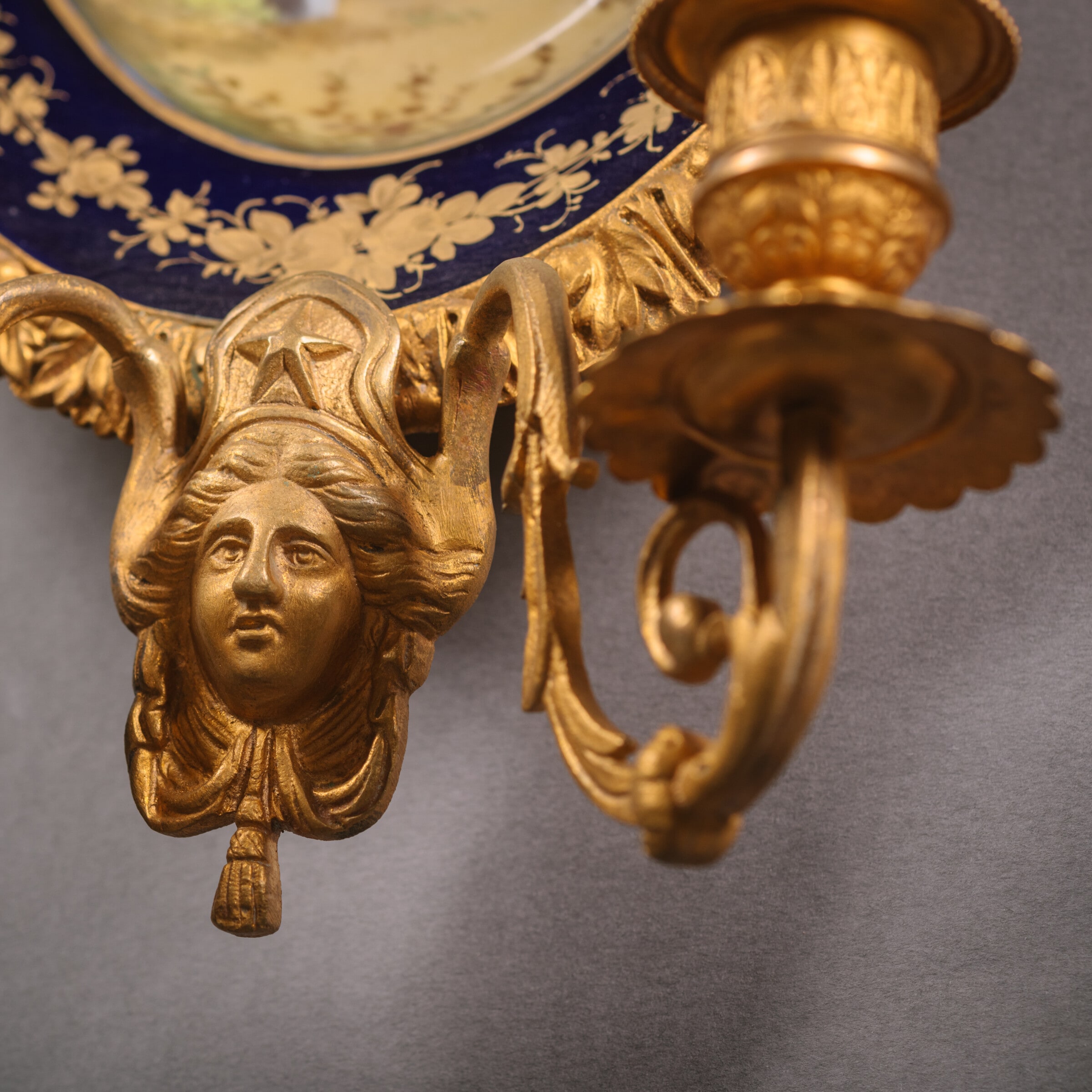Sèvres (Estilo)
Un par de platos ovalados de porcelana montados como apliques
£6,800
A Pair of Sevres Style Oval Porcelain Dishes Mounted as Appliques. . The reverse with spurious Chateau des Tuileries marks and S.37 stamp in blue Sèvres...
Dimensiones
Height: 42 cm (17 in)Ancho: 22 cm (9 in)
Depth: 13 cm (6 in)
Descripción
A Pair of Sevres Style Oval Porcelain Dishes Mounted as Appliques. .
The reverse with spurious Chateau des Tuileries marks and S.37 stamp in blue Sèvres 1844′.
Each oval porcelain dish having a cobalt blue border with gilt-foliate decoration, centred by painted reserves depicting pastoral scenes of la ‘fête champêtre’, within a gilt-bronze ribbon tied frame, with a mask terminal issuing twin scrolling arms with anthemion cast nozzles and foliate drip-trays.
Francés, alrededor de 1910.
Fecha
Alrededor de 1910
Origen
Francés
Medio
Gilt-Bronze and Porcelain
Firma
The reverse with spurious Chateau des Tuileries marks and S.37 stamp in blue Sèvres 1844'.
The Sèvres Porcelain Manufactory was founded to the east of Paris in the disused Royal Château of Vincennes, late in 1739-40. and moved to the village of Sèvres, west of Paris in 1756, en route to King Louis XV’s palace of Versailles.
Here it was also adjacent to Louis’s mistress Madame de Pompadour’s own château at Bellevue. She was delighted with the factory’s new location – as she knew she could entice Louis to take a greater interest in it when it was so near their own residences. Indeed, the King became such a keen patron of the factory that, when it ran into financial difficulties, he bought out the shareholders and became the sole proprietor. The factory remained a royal enterprise until the French Revolution, when it was nationalised.
The popularity of the Louis XV style during the nineteenth century led to a number of companies in and around Paris, creating exceptional Sèvres-Style porcelain based on eighteenth century models and to the same exceptional quality. Often these pieces were of exhibition quality and scale, and finely painted by the best studio painters of the day such as Robert, Desprez and Poitevin.












 Imprimir
Imprimir


